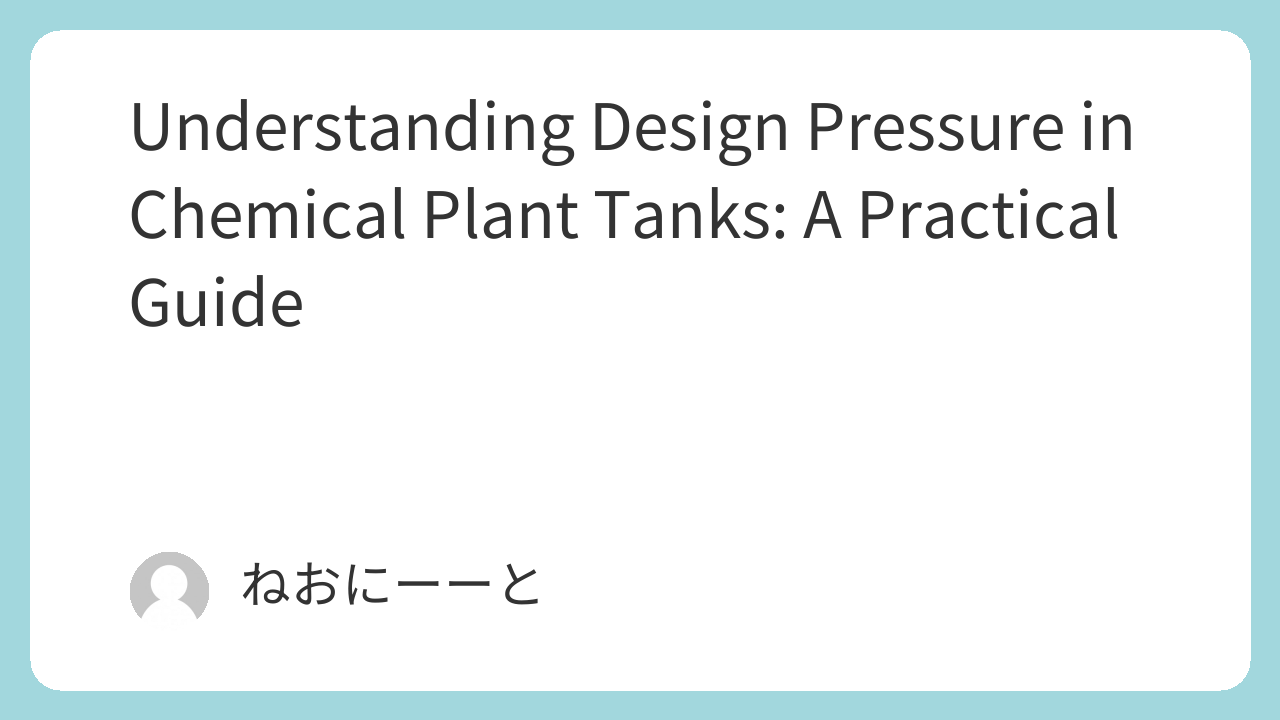Design pressure is a fundamental concept in equipment design, yet it is often overlooked until engineers encounter pressure vessels, high-pressure gas systems, or regulatory requirements. For general specifications, standardized dimensions are usually applied, and engineers may proceed without consciously considering design pressure.
However, neglecting this factor can lead to safety risks and design errors. This article breaks down design pressure concepts with a focus on tanks—both with and without jackets—while highlighting common pitfalls for beginner engineers.
This post is part of a broader Design Pressure Series, which also covers:
- Safe pressure reduction methods: control valves vs. safety valves
- Strength calculations of pressure vessels: practical approaches
- Safety considerations in gas line design for chemical plants
- Practical applications of heat exchangers and seal pots
- Differences between leak tests, hydrostatic tests, and pressure tests
Essential Tank Terminology for Chemical Engineers|Master the Words Used in Real Plant Design
9 Common Tank Nozzle Design Patterns for Chemical Plants
Tank Nozzle Orientation: Practical Guidelines for Design and Operation
Designing Tank Manholes: Key Points for Safety and Maintenance Efficiency
Pressure Testing in Tanks and Piping: Understanding Leak, Hydrostatic, and Water-Filling Tests
1. Defining Design Pressure
- Design Pressure: The pressure used for strength calculations.
- Operating Pressure: The actual pressure during plant operation.
Design pressure must always be equal to or higher than the operating pressure.
For tanks, we typically consider:
- Without jacket: Full vacuum to 100 kPaG (0–200 kPaA).
- With jacket: Jacket side may reach up to 299 kPa depending on steam pressure.
2. Design Pressure Without Jacket
- External Pressure (Vacuum Condition)
- Tank at 0 kPaA, atmosphere at 101 kPaA → Design pressure = 101 kPa external pressure.
- Internal Pressure (Positive Pressure Condition)
- Tank at 200 kPaA, atmosphere at 101 kPaA → Design pressure = 99 kPa internal pressure.
3. Design Pressure With Jacket
Adding a jacket introduces additional scenarios:
- Tank External Pressure
- Tank at 0 kPaA, jacket at 400 kPaA → Design pressure = 400 kPa external pressure.
- Tank Internal Pressure
- Tank at 200 kPaA, jacket at 0 kPaA → Design pressure = 200 kPa internal pressure.
- Jacket External Pressure
- Jacket at 0 kPaA, atmosphere at 101 kPaA → Design pressure = 101 kPa external pressure.
- Jacket Internal Pressure
- Jacket at 400 kPaA, atmosphere at 101 kPaA → Design pressure = 299 kPa internal pressure.
4. Other Loads: Do They Matter?
- Self-weight of tank and liquid → approx. 3% of tensile strength → negligible in design.
- Personnel & material loads → ~1 kPa vs. 100 kPa design → negligible.
- Piping loads → ~1 kPa → negligible.
Thus, process pressures (internal & external) dominate design considerations.
Conclusion
When designing chemical plant tanks, both with and without jackets, engineers must carefully evaluate internal and external pressure scenarios, particularly under vacuum conditions. While self-weight, piping, and personnel loads exist, they are negligible compared to process pressure.
👉 The key takeaway: Always check vacuum conditions, as tanks are structurally weaker against external pressure.

Comments